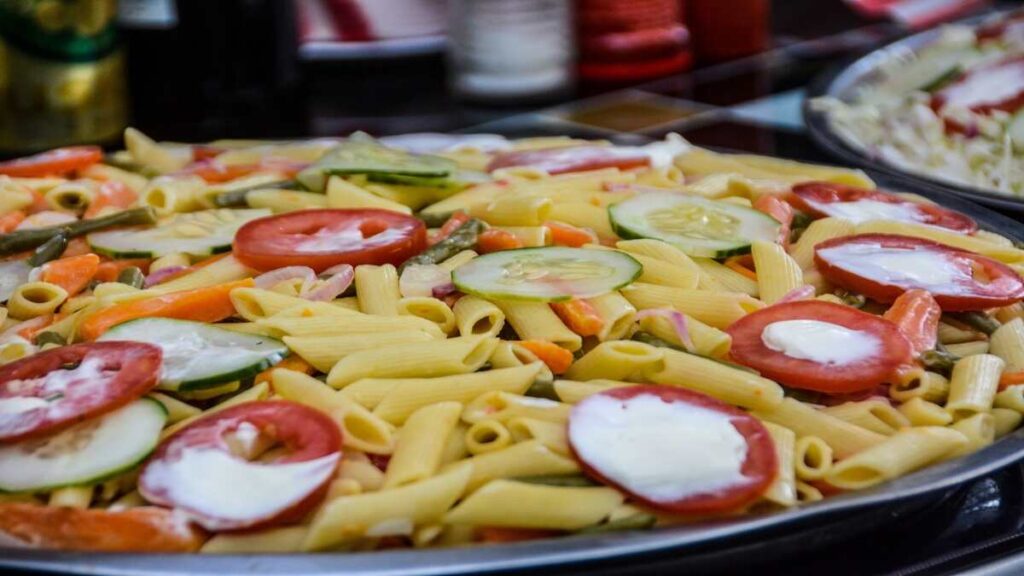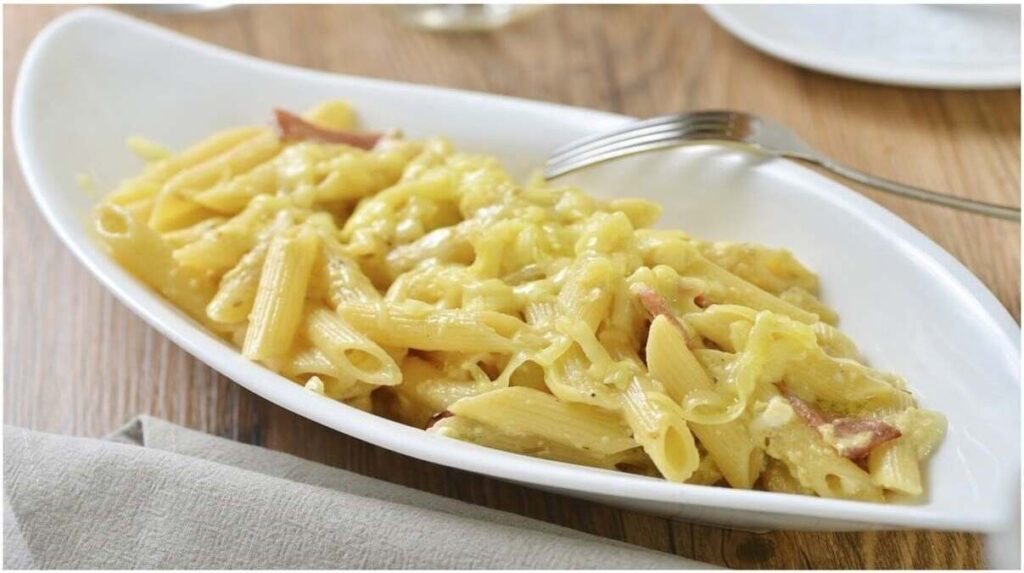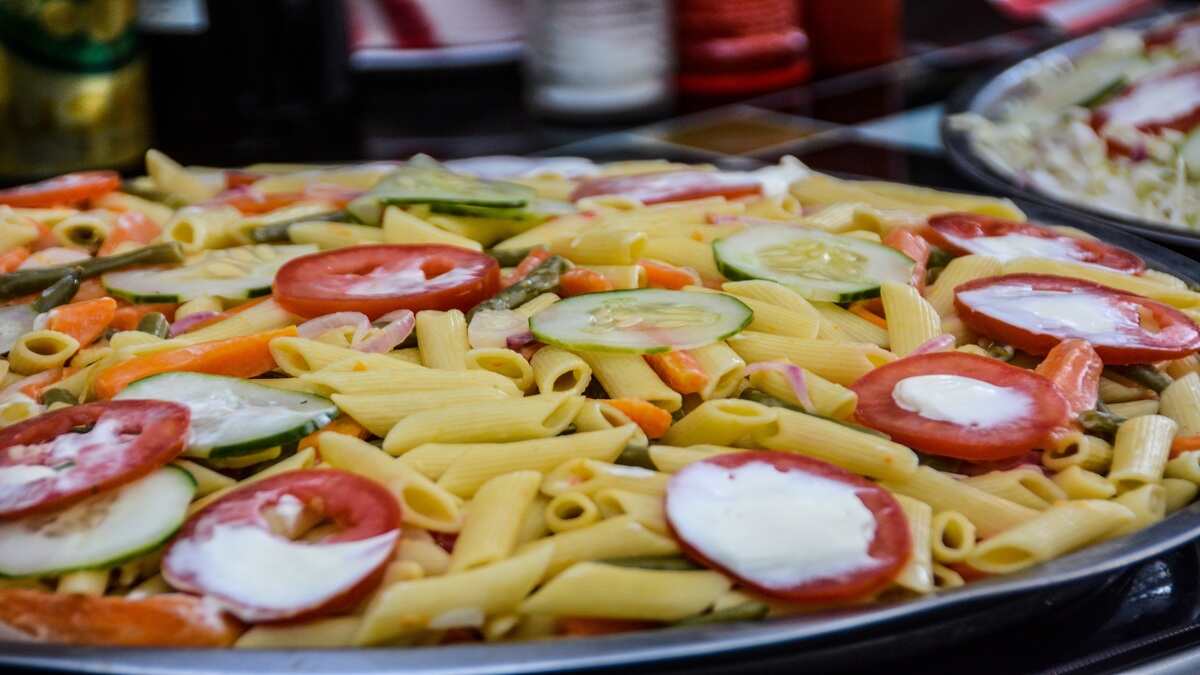Introduction
Few dishes evoke nostalgia like a steaming bowl of Macaroni and Cheese Recipe. Whether it’s the blue-box classic from childhood or a gourmet baked version with a golden crust, mac and cheese is the ultimate crowd-pleaser. But what makes this simple combination of pasta and cheese so irresistible? In this guide, we’ll explore its surprising history, break down foolproof recipes, and even reveal how to make it healthier—without sacrificing that creamy, cheesy magic. Let’s dig in!
What Is Macaroni and Cheese Recipe?
Macaroni and Cheese Recipe (aka “mac and cheese”) is a dish of cooked pasta smothered in a cheese-based sauce. The sauce typically starts with a roux (butter and flour mixture) combined with milk and melted cheese, creating a velvety coating for the noodles. It can be served stovetop-style for quick comfort or baked with a crispy breadcrumb topping. Fun fact: Americans consume over 1 million boxes of Kraft Mac & Cheese daily—proof of its iconic status!

A Bite of History: Where Did Macaroni and Cheese Recipe Come From?
While often dubbed an American classic, mac and cheese has roots in Europe. A similar dish, maccheroni al formaggio, appeared in 14th-century Italian cookbooks. But it was Thomas Jefferson who popularized it in the U.S. after tasting pasta in France. He served a macaroni pie at a White House dinner in 1802 and even imported a pasta machine! By the 1930s, Kraft’s boxed version made it a pantry staple during the Great Depression.
Did You Know? A 2023 survey by The Cheese Industry Report found that 82% of Americans consider mac and cheese their #1 comfort food.
Ingredients You’ll Need
(Serves 6-8)
Here’s the essentials (with swaps for dietary needs):
- Pasta: 2 cups elbow macaroni (or gluten-free, whole-grain, or chickpea pasta).
- Cheese:
- Cheddar: 2 cups shredded (sharp for bold flavor, mild for creaminess).
- Mozzarella: 1 cup shredded (adds stretchy texture).
- Parmesan: ½ cup grated (for a salty kick).
- Sauce Base:
- 4 tbsp butter (or olive oil for dairy-free).
- ¼ cup flour (or cornstarch for gluten-free).
- 2.5 cups milk (whole milk for richness, almond milk for lighter versions).
- Seasonings: 1 tsp mustard powder, ½ tsp paprika, salt, and pepper.
Pro Tip: Add a dash of hot sauce or nutmeg to elevate the sauce!
Equipment Checklist
No fancy gadgets required:
- Large pot for boiling pasta
- Medium saucepan for cheese sauce
- Whisk (to prevent lumps)
- 9×13-inch baking dish (for baked versions)
- Colander
Step-by-Step Preparation
1. Cook the Pasta:
- Boil macaroni in salted water until al dente (1-2 minutes less than package directions). Drain and set aside.
2. Make the Cheese Sauce:
- Melt butter in a saucepan over medium heat. Whisk in flour to form a roux (cook 1-2 minutes to eliminate raw flour taste).
- Slowly pour in milk, whisking constantly until thickened (about 5 minutes).
- Reduce heat, stir in cheeses until melted, then add seasonings.
3. Combine & Serve:
- Toss pasta with cheese sauce. Eat immediately for stovetop mac, or transfer to a baking dish, top with breadcrumbs, and bake at 375°F for 20 minutes.
Avoid Grainy Sauce: Use freshly shredded cheese (pre-shredded contains anti-caking agents that can ruin texture).
Health Benefits (Yes, You Read That Right!)
While mac and cheese isn’t a superfood, smart tweaks boost its nutrition:
- Protein & Calcium: Cheese provides 10g protein and 20% of your daily calcium per serving.
- Fiber Boost: Swap regular pasta for whole-grain to add 5g fiber per cup.
- Veggie Power: Stir in puréed butternut squash or spinach for hidden nutrients.
Nutritionist Dr. Emily Carter notes, “Adding veggies or lean protein like chicken turns Macaroni and Cheese Recipe into a balanced meal.”
Pro Tips for Next-Level Mac
- Creamier Sauce: Replace ½ cup milk with evaporated milk for extra silkiness.
- Crispy Topping: Mix panko breadcrumbs with melted butter and garlic powder.
- Meal Prep: Make sauce ahead and refrigerate for 3 days; combine with pasta when ready.
How to Serve It
Mac and cheese pairs perfectly with:
- Crunchy Contrast: Garlic bread, apple slices, or a crisp green salad.
- Protein Pairings: BBQ pulled pork, grilled chicken, or crispy bacon.
- Veggie Sides: Roasted broccoli or sautéed kale.
Presentation Hack: Serve in mini cast-iron skillets for a rustic touch.
Nutrition Facts (Per Serving)
| Calories | Protein | Carbs | Fat | Fiber |
| 420 | 15g | 45g | 20g | 2g |
Based on 8 servings with whole milk and white pasta.
Prep Time: 15 mins
Cook Time: 25 mins
Total Time: 40 mins
Why This Recipe Stands Out
This version skips the artificial ingredients in boxed kits while staying simple enough for weeknights. For a unique twist, try:
- Truffle Mac: Drizzle with truffle oil and top with shaved Parmesan.
- Buffalo Chicken Mac: Mix in shredded chicken and hot sauce.
- Lobster Mac: Add chunks of cooked lobster for luxury.
FAQs
Q: Can I freeze Macaroni and Cheese Recipe?
A: Yes! Freeze baked portions for up to 3 months. Reheat at 350°F until bubbly.
Q: Why is my sauce clumpy?
A: The heat may be too high. Keep the stove on medium and whisk constantly.
Q: Can I make it vegan?
A: Absolutely! Use plant-based butter, milk, and cheeses like cashew-based cheddar.
Conclusion
Macaroni and Cheese Recipe is more than a dish—it’s a cultural icon, a blank canvas for creativity, and a hug on a plate. Whether you stick to the classic or experiment with bold add-ins, its universal appeal lies in its simplicity. Whip up a batch tonight, and savor the comfort!

Table: Classic vs. Healthier Macaroni and Cheese Recipe Comparison
| Ingredient | Classic Version | Healthier Swap |
| Pasta | White elbow | Whole-grain or chickpea |
| Cheese | Full-fat cheddar | Reduced-fat or vegan |
| Milk | Whole milk | Unsweetened almond milk |
| Add-ins | Bacon bits | Steamed broccoli |
| Topping | Buttered breadcrumbs | Whole-wheat panko |
